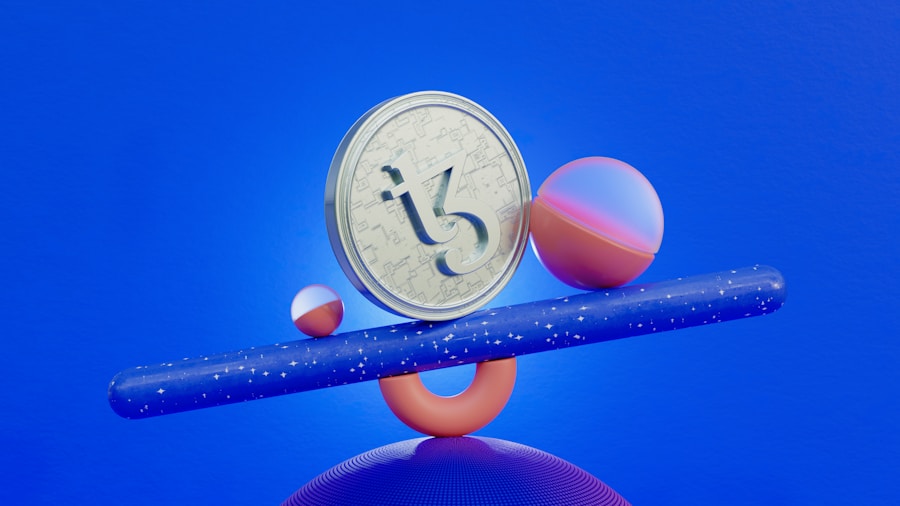Non-Fungible Tokens (NFTs) have taken the art world by storm in recent years, revolutionizing the way we buy, sell, and collect digital art. These unique digital assets have gained immense popularity and media attention, with artists and collectors alike embracing this new form of artistic expression. In this blog post, we will delve into the world of NFTs, exploring their rise in popularity, their impact on the art market, and their potential for the future. From NFT Week Miami to the most expensive NFTs sold, we will cover a wide range of topics to provide a comprehensive understanding of this exciting phenomenon.
NFT Week Miami: A New Era in Art
NFT Week Miami was a groundbreaking event that took place in Miami, Florida, showcasing the power and potential of NFTs in the art world. The event brought together artists, collectors, and industry leaders to discuss and explore the future of digital art. It featured notable speakers such as Beeple, the artist behind the record-breaking NFT sale at Christie’s auction house, as well as exhibitions and installations showcasing some of the most innovative and groundbreaking NFT artwork.
The significance of NFT Week Miami lies in its ability to bring together artists and collectors from around the world to celebrate and explore this new era in art. It provided a platform for artists to showcase their work and connect with potential buyers, while also fostering a sense of community among those involved in the NFT space. The event highlighted the growing interest and investment in NFTs, solidifying their place in the art market.
The Rise of NFTs: What You Need to Know
To understand the impact of NFTs on the art world, it is important to first understand what they are and how they work. NFTs are unique digital assets that are stored on a blockchain, a decentralized digital ledger that ensures their authenticity and ownership. Unlike cryptocurrencies such as Bitcoin, which are fungible and can be exchanged on a one-to-one basis, NFTs are indivisible and cannot be exchanged for another token of equal value.
The recent surge in popularity of NFTs can be attributed to several factors. Firstly, NFTs provide a way for artists to monetize their digital creations, which were previously difficult to sell or protect from unauthorized copying. NFTs also offer collectors a new way to invest in art, with the potential for significant returns on investment. Additionally, the media attention surrounding high-profile NFT sales, such as Beeple’s “Everydays: The First 5000 Days” selling for $69 million, has brought NFTs into the mainstream consciousness.
The Future of Art: How NFTs are Changing the Game
NFTs are disrupting traditional art markets and creating new opportunities for artists. With NFTs, artists can sell their work directly to collectors, bypassing traditional intermediaries such as galleries and auction houses. This allows artists to retain more control over their work and receive a larger share of the profits. It also opens up new revenue streams for artists, such as royalties on secondary sales.
NFTs are also being used in innovative ways to create new types of art. Artists are exploring the possibilities of interactive and generative art, where the artwork evolves or changes based on user input or external factors. This dynamic nature of NFTs adds a new layer of creativity and engagement to the art world. Additionally, NFTs can be used to tokenize real-world assets, such as physical artwork or real estate, allowing for fractional ownership and increased liquidity.
The Power of Digital Art: A Look at the Most Expensive NFTs Sold
One of the most intriguing aspects of NFTs is their ability to command high prices in the art market. Some of the most expensive NFTs sold to date include Beeple’s “Everydays: The First 5000 Days” for $69 million, CryptoPunk #7804 for $7.6 million, and a virtual plot of land in the virtual world Decentraland for $1.5 million. These high prices can be attributed to several factors.
Firstly, the scarcity and uniqueness of NFTs contribute to their value. Each NFT is one-of-a-kind, making it a rare and collectible asset. Additionally, the provenance and authenticity of NFTs are easily verifiable on the blockchain, providing buyers with confidence in their purchase. The high prices also reflect the growing demand for digital art and the willingness of collectors to invest in this new form of artistic expression.
NFTs and the Art Market: Opportunities and Challenges
While NFTs offer exciting opportunities for artists and collectors, they also present challenges for the traditional art market. The ease of creating and selling NFTs has led to an influx of digital artwork flooding the market, making it difficult for collectors to navigate and identify valuable pieces. Additionally, the lack of regulation in the NFT space raises concerns about copyright infringement and intellectual property rights.
Furthermore, the environmental impact of NFTs has come under scrutiny. The energy consumption associated with blockchain technology, particularly in the case of proof-of-work blockchains like Ethereum, has raised concerns about the carbon footprint of NFTs. Artists and collectors are now exploring more sustainable alternatives, such as proof-of-stake blockchains or carbon offsetting initiatives.
From Collectors to Creators: How NFTs are Empowering Artists
One of the most significant impacts of NFTs is their ability to empower artists by giving them more control over their work and revenue streams. With NFTs, artists can sell their work directly to collectors, eliminating the need for intermediaries and allowing them to retain a larger share of the profits. This direct relationship between artists and collectors also fosters a sense of community and connection.
NFTs also provide artists with the opportunity to experiment with new forms of art and engage with their fans in innovative ways. Artists can create limited edition NFTs, offer exclusive perks or experiences to NFT holders, or even collaborate with other artists or brands to create unique digital collectibles. This level of creativity and engagement is unprecedented in the art world and opens up new possibilities for artists to connect with their audience.
NFTs and the Music Industry: A New Frontier for Artists and Fans
NFTs are not limited to the visual arts; they are also making waves in the music industry. Musicians are using NFTs to create unique fan experiences and generate new revenue streams. For example, artists can release limited edition albums or songs as NFTs, offering exclusive content or access to live performances to NFT holders. This creates a sense of exclusivity and ownership for fans, while also providing artists with a direct source of income.
Several musicians have successfully embraced NFTs, including Kings of Leon, who released their latest album as an NFT, and Grimes, who sold digital art and music as NFTs, earning millions of dollars in the process. These examples demonstrate the potential for NFTs to revolutionize the music industry by providing artists with more control over their work and creating new ways for fans to engage with their favorite musicians.
The Role of Blockchain in Art: Transparency and Authenticity
Blockchain technology plays a crucial role in the world of NFTs by ensuring transparency and authenticity. Each NFT is stored on a blockchain, which acts as a decentralized digital ledger that records all transactions related to the token. This means that the ownership and provenance of an NFT can be easily verified, providing buyers with confidence in their purchase.
Blockchain technology also enables artists to receive royalties on secondary sales of their NFTs. Smart contracts, which are self-executing contracts with the terms of the agreement directly written into code, can be programmed to automatically distribute a percentage of the sale price to the original artist whenever the NFT is resold. This ensures that artists can continue to benefit from the increasing value of their work even after it has been sold.
NFTs and Social Impact: How Art is Driving Change
NFTs are not just changing the art market; they are also being used to support social causes and drive change. Artists and organizations are using NFTs to raise funds for charitable initiatives, support marginalized communities, and promote environmental sustainability. For example, digital artist Beeple donated a portion of the proceeds from his record-breaking NFT sale to various charities.
NFTs also provide a platform for underrepresented artists to showcase their work and gain recognition. The decentralized nature of NFTs allows artists from all over the world to connect with collectors and audiences, bypassing traditional gatekeepers and barriers to entry. This democratization of the art world has the potential to create a more inclusive and diverse artistic landscape.
The Future of Museums and Galleries: NFTs and Virtual Reality
NFTs are not only changing the way we buy and sell art; they are also transforming the way we experience it. Virtual reality (VR) technology is being integrated with NFTs to create immersive digital art experiences. Museums and galleries are adapting to this new technology by hosting virtual exhibitions and installations, allowing visitors to explore digital artworks in a virtual environment.
This fusion of NFTs and VR opens up new possibilities for artists to create interactive and immersive art experiences. Visitors can walk through virtual galleries, interact with digital sculptures, or even step into virtual worlds created by artists. This blurring of the lines between the physical and digital realms has the potential to redefine the concept of art and how we engage with it.
NFTs and the Environment: Sustainability and the Digital Art Market
The environmental impact of NFTs has become a topic of concern in recent months. The energy consumption associated with blockchain technology, particularly in the case of proof-of-work blockchains like Ethereum, has raised questions about the carbon footprint of NFTs. Critics argue that the energy-intensive process of minting and trading NFTs contributes to climate change.
However, it is important to note that not all NFTs are created equal in terms of their environmental impact. Artists and collectors can choose to use more sustainable blockchain networks, such as those based on proof-of-stake consensus mechanisms, which consume significantly less energy. Additionally, efforts are being made to offset the carbon emissions associated with NFTs through initiatives such as carbon offsetting or investing in renewable energy projects.
In conclusion, NFTs have ushered in a new era in the art world, revolutionizing the way we buy, sell, and collect digital art. From NFT Week Miami to the most expensive NFTs sold, we have explored a wide range of topics related to this exciting phenomenon. NFTs are disrupting traditional art markets, empowering artists, and creating new opportunities for collectors. They are also being used to support social causes, drive change, and redefine the way we experience art.
While there are challenges and concerns associated with NFTs, such as their impact on the environment and the potential for copyright infringement, it is clear that they have the potential to reshape the art world for years to come. As technology continues to evolve and new innovations emerge, it will be fascinating to see how NFTs continue to evolve and shape the future of art.









